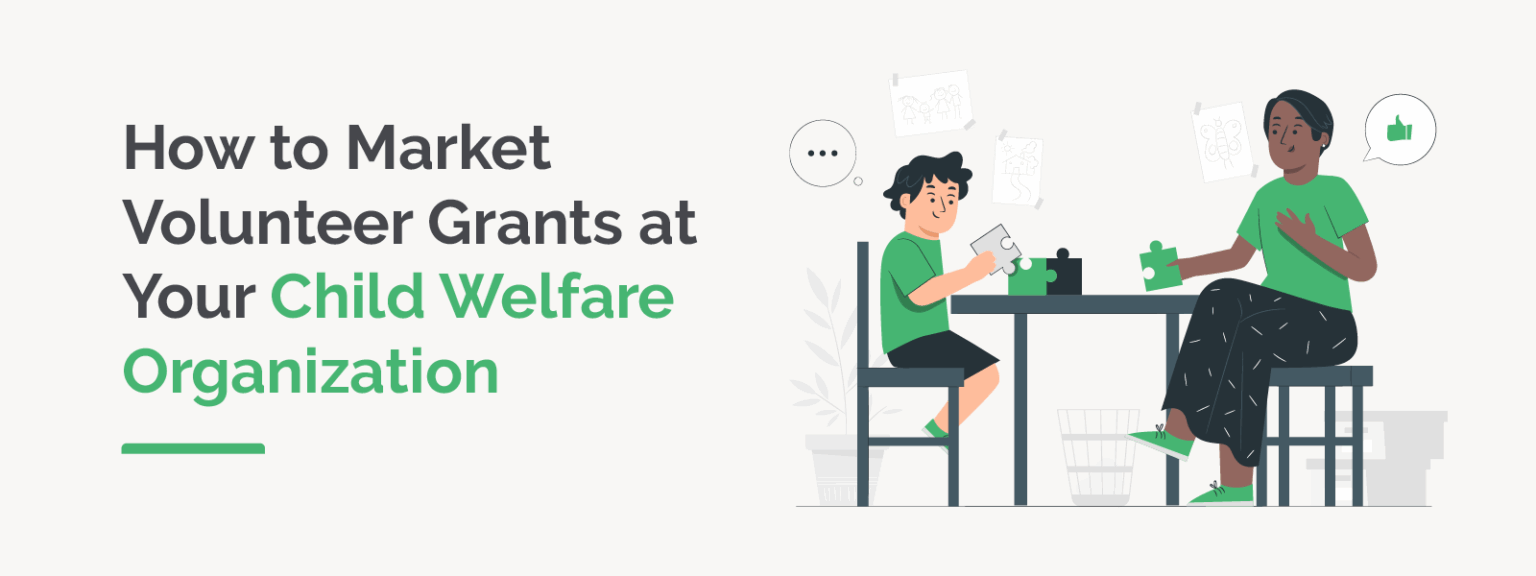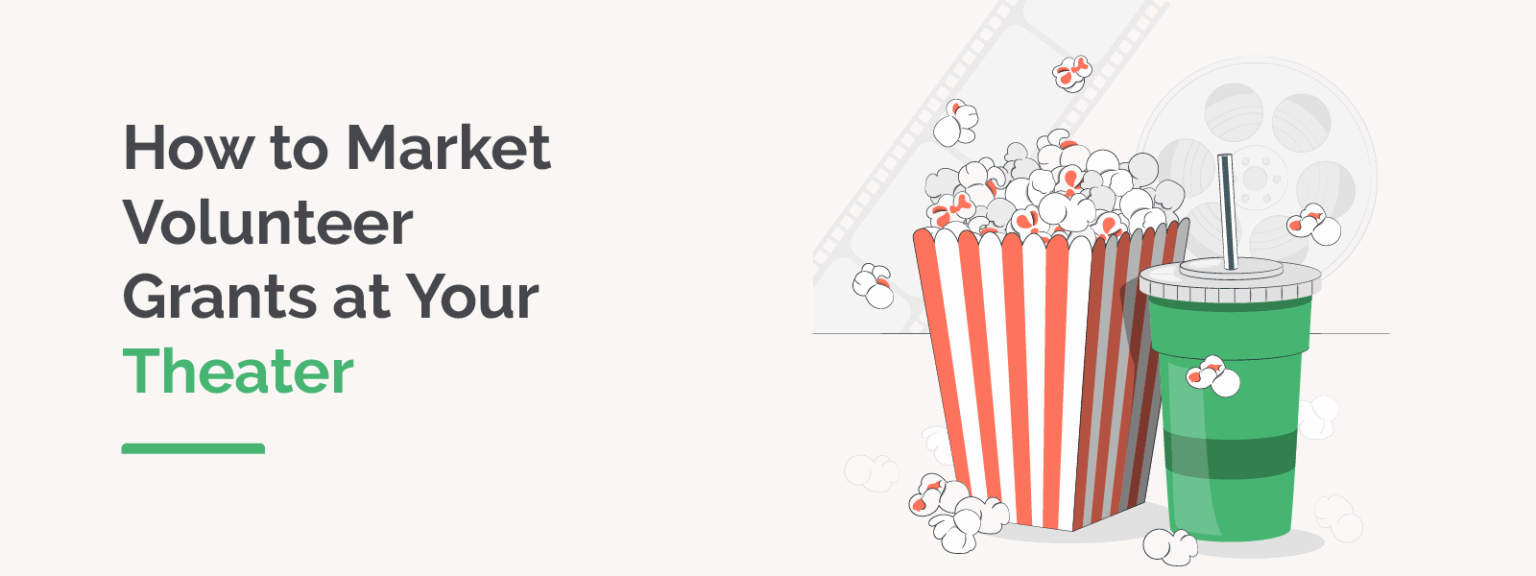How to Market Volunteer Grants at Your Animal Shelter
Animal shelters play a vital role in our communities by providing care, shelter, and hope to countless animals in need. These organizations rely heavily on the generosity of volunteers and donors to sustain their operations and expand their impact. One often underutilized resource that can significantly boost funding and engagement is volunteer grants. These grants are corporate-sponsored donations awarded to nonprofits when their volunteers contribute a certain number of hours. Effectively marketing volunteer grants can unlock new revenue streams and deepen relationships with supporters.
This article explores why marketing volunteer grants matter, strategies to reach your supporters, messaging tips, and how to overcome common challenges in this space:
- Why Marketing Volunteer Grants Matter for Animal Shelters
- Strategies for Marketing Volunteer Grants to Animal Shelter Supporters
- Key Tips for Volunteer Grant Messaging that Resonates with Animal Shelters
- Overcoming Common Volunteer Grant Marketing Challenges for Animal Shelters
Understanding how to promote volunteer grants within the context of animal shelters requires a strategic approach tailored to the unique nature of these organizations. Volunteers at animal shelters are often deeply passionate about animal welfare, making them ideal candidates for corporate volunteer grant programs. By educating volunteers and donors about these opportunities, shelters can maximize the financial benefits while fostering a stronger community of advocates.
Why Marketing Volunteer Grants Matter for Animal Shelters
Volunteer grants represent a powerful but frequently overlooked funding source for animal shelters. Many corporations offer volunteer grant programs as part of their corporate social responsibility initiatives, providing financial donations to nonprofits where their employees volunteer. For animal shelters, this means that every hour a volunteer spends caring for animals, cleaning facilities, or assisting with outreach can translate into additional funding.
Marketing these grants effectively ensures that volunteers are aware of the opportunity and motivated to participate. Without clear communication, many volunteers may never realize that their time can generate extra support for the shelter. This lack of awareness results in missed funding and less engagement. By promoting volunteer grants, shelters can increase volunteer retention and encourage more consistent involvement, as volunteers see their efforts rewarded in multiple ways.
Enhancing Volunteer Engagement Through Grants
Volunteer grants not only provide financial benefits but also enhance the volunteer experience. When volunteers know their hours can lead to tangible support for the shelter, they often feel a greater sense of purpose and connection. This emotional investment can lead to longer-term commitment and advocacy, which are crucial for animal shelters that depend on ongoing community support.
Moreover, volunteers who participate in grant programs often become ambassadors for the shelter, spreading awareness and encouraging others to get involved. This ripple effect can expand the shelter’s volunteer base and donor network, creating a sustainable cycle of support.
Increasing Revenue Without Additional Fundraising Asks
One of the most attractive aspects of volunteer grants is that they generate revenue without requiring additional donation requests. This is particularly important for animal shelters, which may already have limited fundraising capacity. By leveraging volunteer hours, shelters can unlock new funds with minimal extra effort, allowing staff to focus on core mission activities.
Additionally, volunteer grants can complement other fundraising initiatives, providing a diversified income stream that strengthens the shelter’s financial health. This diversification is essential for weathering economic fluctuations and ensuring long-term stability.
Strategies for Marketing Volunteer Grants to Animal Shelter Supporters
To successfully market volunteer grants, animal shelters need to implement targeted strategies that resonate with their unique audience. Understanding the motivations and behaviors of volunteers and donors is key to crafting effective outreach campaigns.
One foundational strategy is education. Many volunteers are simply unaware that their hours can translate into corporate donations. Providing clear, accessible information about volunteer grants through multiple channels ensures that this message reaches a broad audience.
Utilizing Digital Platforms for Outreach
Animal shelters can leverage their websites, social media accounts, and email newsletters to promote volunteer grants. Creating dedicated web pages that explain the program, eligibility criteria, and step-by-step instructions for submitting grant requests can demystify the process. Social media posts featuring success stories and testimonials from volunteers who have benefited from grants can also inspire others to participate.
Email campaigns targeted at active volunteers and donors can provide timely reminders about upcoming volunteer opportunities and the potential for grants. Including calls to action that encourage volunteers to log their hours and apply for grants helps maintain momentum and engagement.
Partnering with Corporations and Employers
Building relationships with local businesses and corporations that offer volunteer grant programs is another effective strategy. Animal shelters can collaborate with these companies to promote volunteer opportunities among their employees and provide support for the grant application process. Hosting joint events or volunteer days can increase visibility and participation.
Additionally, shelters can request that corporate partners include information about volunteer grants in their internal communications, further amplifying the message and encouraging employee involvement.
Incorporating Volunteer Grants into Volunteer Orientation
Introducing volunteer grant information during orientation sessions ensures that new volunteers are immediately aware of the opportunity. Providing printed materials, FAQs, and contact information for support staff can empower volunteers to take advantage of grants from the outset of their involvement.
This early education helps set expectations and fosters a culture of engagement where volunteers understand the full value of their contributions.
Key Tips for Volunteer Grant Messaging that Resonates with Animal Shelters
Crafting compelling messaging around volunteer grants requires a deep understanding of what motivates animal shelter supporters. Messaging should emphasize the impact of volunteer hours and how grants amplify that impact, creating a win-win scenario for volunteers and the shelter.
Using storytelling techniques that highlight individual volunteers and the animals they help can make the message more relatable and emotionally engaging. Personal stories create a connection that statistics alone cannot achieve.
Highlighting the Dual Impact of Volunteering
Messages that emphasize how volunteer hours not only provide direct care to animals but also unlock financial support can inspire greater participation. Volunteers appreciate knowing that their time has a multiplier effect, benefiting the shelter in multiple ways.
For example, a message might explain how a few hours spent walking dogs or cleaning kennels can lead to a corporate donation that funds medical care or food supplies. This tangible connection between effort and outcome motivates volunteers to contribute consistently.
Using Clear Calls to Action
Effective messaging includes clear, actionable steps for volunteers to follow. Whether it’s logging hours through an online portal, submitting a grant request form, or contacting shelter staff for assistance, volunteers need straightforward guidance.
Calls to action should be concise and repeated across communication channels to reinforce the message. Providing incentives, such as recognition or small rewards for volunteers who successfully secure grants, can also boost participation.
Addressing Common Questions and Concerns
Anticipating and addressing potential barriers in messaging helps reduce confusion and hesitation. Common questions might include eligibility criteria, how to track hours, or the timeline for receiving grant funds. Providing FAQs and offering direct support through phone or email can alleviate these concerns. Transparency about the process builds trust and encourages more volunteers to engage with the program confidently.
Overcoming Common Volunteer Grant Marketing Challenges for Animal Shelters
Despite the benefits, marketing volunteer grants can present challenges for animal shelters. Limited staff capacity, volunteer turnover, and complex grant application processes can hinder effective promotion and participation.
Recognizing these obstacles and proactively addressing them is essential for success.
Streamlining the Grant Application Process
Many volunteers find grant applications confusing or time-consuming. Simplifying the process by providing easy-to-follow instructions, templates, and direct assistance can increase completion rates. Animal shelters might consider designating a volunteer grants coordinator to support applicants and track submissions, or working with a volunteer grant database provider to supply eligibility information and direct links to submission forms in real time.
Utilizing software tools that integrate volunteer hour tracking with grant applications can also reduce administrative burdens and improve accuracy.
Maintaining Volunteer Engagement Over Time
Volunteer turnover is common in animal shelters, which can disrupt continuity in grant participation. To combat this, shelters should maintain regular communication with volunteers, celebrate successes, and create a welcoming community atmosphere. Offering ongoing training and recognition programs helps retain volunteers and encourages repeat participation in grant programs.
Allocating Resources for Marketing Efforts
Limited budgets and staff time can restrict marketing activities. Prioritizing volunteer grant promotion within the shelter’s overall fundraising strategy ensures it receives adequate attention. Leveraging partnerships, volunteers, and digital tools can extend reach without significant additional costs. Meanwhile, automating communications and integrating volunteer grant messaging into existing outreach efforts maximizes efficiency.
Wrapping Up & Next Steps
Marketing volunteer grants effectively at animal shelters requires a thoughtful, multi-faceted approach that educates, motivates, and supports volunteers. By highlighting the financial and emotional benefits of volunteer grants, shelters can deepen engagement and unlock new funding streams. Overcoming challenges through streamlined processes and strategic communication ensures that these opportunities are accessible and rewarding for all involved.
As animal shelters continue to navigate the evolving landscape of nonprofit fundraising, integrating volunteer grant marketing into their broader strategies will be key to sustaining and expanding their vital work.
Maximize Volunteer Grant Opportunities with Double the Donation
Double the Donation Volunteering specializes in helping animal shelters and other nonprofits tap into corporate volunteer incentive programs to boost both engagement and revenue. Their innovative volunteer grant software seamlessly integrates with your existing fundraising tools, making it easier than ever to identify eligible volunteers, educate them on grant opportunities, and empower them to submit requests. This streamlined approach eliminates data silos and uncovers new insights, allowing your shelter to grow funding without additional donation asks.
With support for hundreds of integrations and a proven track record of helping thousands of organizations, Double the Donation is a trusted partner in unlocking the full potential of volunteer grants. If you’re ready to enhance your shelter’s volunteer program and increase revenue, learn how to grow revenue with volunteer grants.











